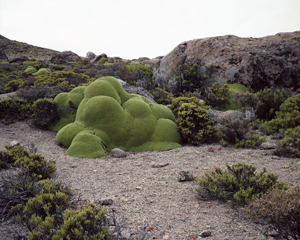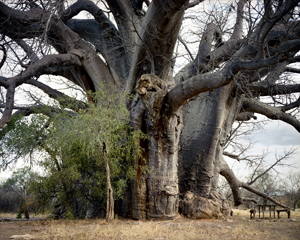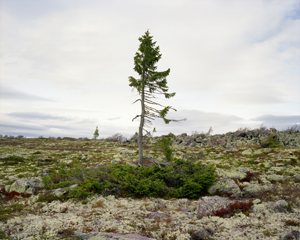Artist biography
Artist website: http://www.rachelsussman.com/
Blog: http://www.oltw.blogspot.com/
For the past 5 years I have been photographing the Oldest Living
Things in the World. These are – by my own definition –
continuously living organisms 2,000 years old and older. So far
I have photographed over 25 different organisms worldwide,
ranging from an 80,000-year-old clonal colony of male Aspen
trees living on a mountainside in Utah, to half a million year
old bacteria living in permafrost in Siberia to a 2,000-year-old
primitive conifer in the Namibian desert. An index of
millennia-old organisms has never before been compiled in the
arts or the sciences. I endeavor to be as accurate as possible
in dating these organisms, working with a varied set of experts
– evolutionary biologists, mycologists, dendrochronologists .
Whenever possible, I meet with them directly in the field.
I approach these organisms in a manner more akin to portraiture
than to landscape photography, with an eye towards revealing
their literal forms, as well as considering the conceptual
framework of “Deep Time”.
The work is primarily made with medium format color film and
displayed in Berlin as 16x20 inch archival pigment exhibition
prints. Some of the images are made using digital optical
microscopy, underwater equipment, and large format film in the
studio.
This body of work is not yet complete. Over the coming two years,
I plan to find and photograph approximately ten more organisms
including a 5,000-year-old moss living on the Antarctic
Peninsula, a 43,000-year-old shrub, King’s Lomatia, in Tasmania,
and a 4,000-year old Cypress in Iran.
All of these organisms have lived for two millennia or more, in
deserts, in the permafrost, on the tops of mountains and at the
bottom of the ocean. They have quietly endured, surviving all
manner of natural perils and human exploitations. However, some
of them are now in jeopardy, and they can’t just get up and get
out of the way. The Oldest Living Things in the World are a
record and celebration of our past, a warning call in the
present and a barometer of our future.
It’s my hope that by going out and photographing these
remarkable organisms, and by creating a means in which to
consider them both across disciplines and across continents,
that I can not only lend a hand in ensuring their continued
longevity, but also inspire others towards substantive thinking
about our collective future. |
 La Llareta #0308-23b26 (Up to 3,000 years old, Atacama Desert,
Chile) Azorella compacta
La Llareta #0308-23b26 (Up to 3,000 years old, Atacama Desert,
Chile) Azorella compacta
 Sagole Baobab #0707-00505 (2,000 years old; Limpopo Province,
South Africa) Adansonia digitata
Sagole Baobab #0707-00505 (2,000 years old; Limpopo Province,
South Africa) Adansonia digitata
 Spruce Gran Picea #0909-6B37 (9,550 years old; Fulufjället,
Sweden) Picea spec.
Spruce Gran Picea #0909-6B37 (9,550 years old; Fulufjället,
Sweden) Picea spec.
|
 La Llareta #0308-23b26 (Up to 3,000 years old, Atacama Desert,
Chile) Azorella compacta
La Llareta #0308-23b26 (Up to 3,000 years old, Atacama Desert,
Chile) Azorella compacta
 Sagole Baobab #0707-00505 (2,000 years old; Limpopo Province,
South Africa) Adansonia digitata
Sagole Baobab #0707-00505 (2,000 years old; Limpopo Province,
South Africa) Adansonia digitata Spruce Gran Picea #0909-6B37 (9,550 years old; Fulufjället,
Sweden) Picea spec.
Spruce Gran Picea #0909-6B37 (9,550 years old; Fulufjället,
Sweden) Picea spec.